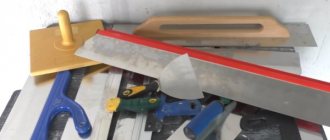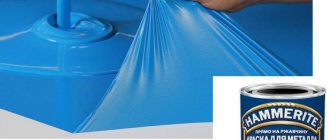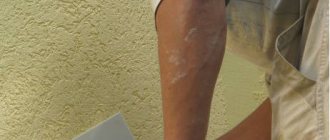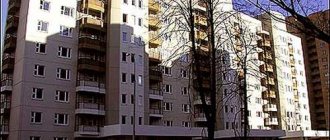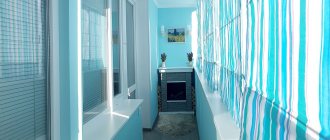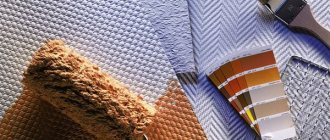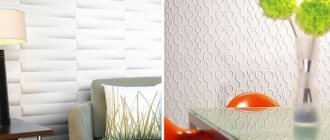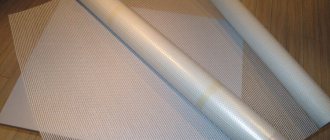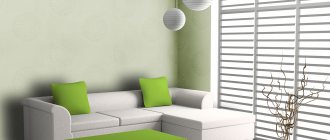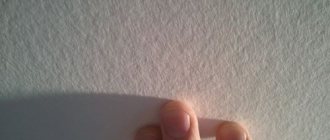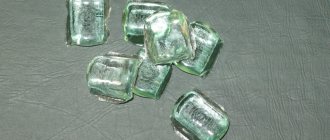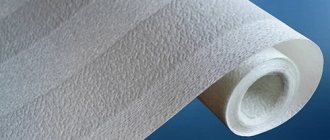Every year new products appear on the building materials market. The choice of material for finishing surfaces has become one of the simplest steps in renovation. The ideal solution for wall decoration is glass wallpaper. Fiberglass wallpaper will satisfy everyone's taste, as long as the budget allows. But choosing is not so easy; buyers often face a number of problems: price, quality and installation. There have been rumors about them for a long time, and in order to figure out what it is, we have selected reliable facts. So, go ahead!
What is glass wallpaper
What is glass wallpaper? This decorative wall covering is a roll, which is similar in structure to fabric and fiberglass, and is made on a loom. The material used to make glass wallpaper is a type of glass from which fibers are extracted at high temperatures.
They are made from natural materials, so you can rest assured that the finished product is durable and safe for health.
Fiberglass wallpaper has another name among buyers - fiberglass wallpaper, although this is not so true. Fiberglass is a material that is not suitable for finishing residential surfaces; it is used for technical work.
Why can’t you choose glass wallpaper based on its “density”?
- home
- Articles
- Why can’t you choose glass wallpaper based on its “density”?
Share link:
Just recently, few Russians knew what glass wallpaper was. Many confused them with liquid wallpaper, some immediately remembered glass wool with an unkind word, others believed that it was a finishing material that was only suitable for boring offices. But today, tens of thousands of our compatriots have successfully tried Wellton and Oscar glass wallpaper in their apartments and country houses and told their family and friends about the amazing properties and characteristics. And there are fewer and fewer ill-informed individuals who unsuccessfully try to compare glass wallpaper with glass wool and believe that glass wallpaper does not have designs “for the home.”
Indeed, the range of glass wallpaper today is incredibly wide. Our designer collection of Wellton Decor fiberglass ECO wallpaper alone includes almost three dozen textured patterns, woven according to original sketches by professional artist-designers. Learning about the environmental friendliness, strength, durability and safety of Wellton and Oscar glass wallpaper, more and more people want to cover the walls of their houses and apartments with them. Such owners of apartments and country real estate are faced with the task of choosing glass wallpaper, which all normal people cope with successfully and quite simply: they looked at the entire collection, chose the design they liked, and bought it! All that remains is to choose high-quality paint and decide on its color.
But sometimes situations arise when some people remember a “story” that came from nowhere about the “density” of glass wallpaper and try to compare glass wallpaper according to this very “density”. They say, the higher the density, the better the glass wallpaper! We declare immediately and with full responsibility! It is impossible to choose glass wallpaper based on density, since the “density” of glass wallpaper does not determine its quality and appearance!
Why can’t “density” be a characteristic of glass wallpaper that determines its quality? It's simple. The density indicator (g/sq.m. - weight in grams of one square meter of canvas) when applied to glass wallpaper cannot reliably reflect their quality, since glass wallpaper is a multi-component product, the weight of which depends on the components included in its composition (two types of glass fiber and impregnating compositions). Based on the density indicator (weight of 1 sq.m.), you can mistakenly mistake heavy-weight but non-relief glass wallpaper with a large amount of impregnation and a low content of poorly textured glass fiber for high-quality glass wallpaper with the correct balance of glass fiber and impregnation, guaranteeing good texture and relief of the patterns of the canvases .
There are some manufacturers who do not have advanced technologies and cannot produce high-quality and embossed glass wallpaper, but, remembering the “magic wand” in the form of “density,” they additionally impregnate the canvases with a cheap primer composition, ensuring that one square meter of the canvas becomes - this impregnation makes it 20-30 percent heavier. And they try to deceive the buyer by loudly talking about the incredible “density” of their glass wallpaper, vaguely hinting that this is real quality! But they are modestly silent about the fact that such “flat” glass wallpaper without texture, and even “clogged” with excess impregnation, after two layers of paint will differ little from an ordinary smooth wall.
By the way, such “games” of manufacturers with impregnation almost always discard these glass wallpapers in fire certification to rather average indicators in terms of smoke-forming ability and toxicity of combustion products (D2, T2). After all, it is the impregnation that ignites and “smokes”! And for high-quality glass wallpaper, all “fire” indicators recorded in the mandatory Certificate of Compliance with the Technical Regulations on Fire Safety Requirements must be at least class 1: low-flammable - G1, low-flammable - B1, low-hazard in terms of toxicity of combustion products - T1 and with low smoke-generating ability – D1.
Every good housewife probably already knows about frozen chickens that are pumped with water to increase weight. But unfortunately, few people know about glass wallpaper, which is “pumped” with impregnation. This is what unscrupulous manufacturers take advantage of.
So how can one still distinguish high-quality glass wallpaper from low-quality ones with similar “density” indicators? Visual and physical and mechanical indicators of the quality of glass wallpaper, determined in the manufacturers’ technical specifications and in GOST R 52805 - 2007 “GLASS FABRIC WALLPAPER. Specifications" adequately describe what to look for when assessing the quality of this wall covering. Of course, not all parameters specified in this state standard of the Russian Federation can be reliably assessed during an external inspection of the product, so we will provide simple and understandable recommendations that will help distinguish high-quality glass wallpaper from low-quality ones.
Product packaging.
- Each roll of glass wallpaper must be packaged in transparent polymer shrink film with full protection of the ends of the roll. The film should not be damaged or wrinkled. The seam on the film must be smooth and complete.
- The roll must be equipped with a rectangular product label and cardboard end caps (“crowns”) with round sticker labels that protect the ends of the roll from damage. Wellton and Oscar fiberglass wallpapers are equipped with additional shock-absorbing corrugated pads installed at the ends of the roll under the round label.
- All product labels and protective cardboard end caps must be placed under plastic shrink wrap. Advertising and information stickers may be placed on the film.
Appearance.
- Glass fiber canvases should not have mechanical damage, wrinkles, ruptures and damage to threads, clumps of glass fiber and impregnation, omissions and loss of threads from the fabric, and weaving errors.
- The cutting line of the edges of the canvas should be clean and even.
- Unimpregnated areas longer than 3 cm are not allowed on the fiberglass canvas.
- Forming rolls from the component parts of the canvas and gluing the canvases into a roll is not allowed.
- The winding of the fabric in the roll should be tight. The winding density of the fabric in a roll is determined by the size of the protrusions at the ends of the roll. The size of the protrusions at the ends of the roll should be no more than 1% of the width of the glass wallpaper when unfolded.
- The fabrics must have a pronounced relief, formed by a high-quality structured weft thread (fluffy thread located across the fabric). The higher the relief of glass wallpaper, the more durable, stronger and better quality it is.
Physical and mechanical quality indicators (density, mass fraction of substances removed during ignition, whiteness and content of harmful substances), given in GOST R 52805 - 2007, are determined in accordance with the requirements of the relevant GOSTs and, often, using special instruments and devices, so their assessment under normal conditions it is difficult, and is not needed by a normal consumer. After all, you see, it is much more important to get beautiful, strong, durable and safe walls with high-quality glass wallpaper than to calculate the mass fraction of substances removed during calcination or weigh glass wallpaper on a scale, determining their “density,” which is in no way related to the concept of real quality.
Share link:
Return to the "Articles" section
Our branches:
Moscow Kyiv Ekaterinburg Novosibirsk
How to choose fiberglass wallpaper
Choosing quality wallpaper is not an easy task. The main criterion by which you need to evaluate the quality of a roll is density, but remember that the manufacturer achieves a high density not because of the large number of fibers, but through a fair percentage of starch impregnation.
How to identify a quality product? There is no other choice but to use a little wallpaper by gluing it on the wall, painting it and drying it. Look at the result and, if everything suits you, take full volumes.
Features of working with glass wallpaper
Video: How to glue glass wallpaper
- Preparatory work. It includes leveling the walls and ceiling. Fill large uneven areas and defects and, after drying, treat with a primer. It is not necessary to bring it to perfect condition. Fiberglass wallpaper will hide minor imperfections. But it’s still better to treat the walls with finishing putty, clean them with sandpaper and prime them again. The better the surface is prepared, the higher the quality of the work.
- Use branded glue, don't skimp. Thanks to quick drying and increased adhesive ability, it reliably holds heavy fiberglass wallpaper. Dry glue is diluted with water; ready-to-use glue can be immediately applied to the walls. In most cases, glue is applied to the surface to be pasted, but there is wallpaper with an applied adhesive layer. They are simply moistened with water.
- After marking (applying a vertical line), the wall is smeared with glue to the width of the roll and a panel cut to size is glued. Smooth with a wide brush or roller, achieving complete adhesion.
- Fiberglass wallpaper is glued end-to-end.
- Panels with a complex pattern have to be selected; make the necessary allowance.
- The reverse side of the wallpaper is marked with a blue or gray stripe. The front one has a more relief pattern.
- Painting begins after complete drying. The packaging indicates a period of at least 12 hours, but it is recommended to wait a couple of days.
- Use water-borne latex-based paint. Paint in several layers using a sprayer or roller.
- Untreated glass wallpaper takes on a lot of paint. Treat them with a special primer.
- If you have to remove old glass wallpaper, use a special removal compound. Cut the wallpaper under the ceiling and pour liquid there. After some time they will come off easily.
How to glue glass wallpaper
- When wallpapering, apply glue to the wall, do not touch the wallpaper.
- When gluing, do it end to end. You will need to cut the wallpaper with an allowance of five centimeters to match the pattern, and trim off the excess. If it has a “cobweb” or “matting”, do not make a large allowance.
- The joint can be horizontal if you use second-grade wallpaper or pieces left over from another roll.
Fiberglass wallpaper can be glued to any surface, the main thing is that it does not have gaps or porosity.
Types of cullet
Wallpaper based on fiberglass is divided into two main groups according to the production method: woven and pressed. Wallpaper obtained by weaving is a ready-made finishing material. They have a relief structure and a certain ornament, from simple geometric to complex patterns and inscriptions. Fiberglass wallpaper is denser and more durable, painted in different colors.
Another name for pressed glass wallpaper is “spider web” or painting fiberglass. They are looser in appearance and are used for leveling and reinforcing surfaces with subsequent finishing. They are light and smooth, so they are more often used on ceilings than on walls.
Wallpaper texture
The texture of glass wallpaper is limited in the number of types, but if desired, you can choose from several options. The most commonly used textures are:
- Rhombus is a classic wallpaper pattern;
- Herringbone is an ideal option for rooms where texture is not particularly important;
- Cobweb is an excellent option for ceilings; it visually levels the surface;
- Matting is ideal for decorating the walls of residential premises.
Classification of fiberglass wallpaper
You can classify wallpaper according to such a parameter as quality. There are several varieties available and an intermediate type between them: in appearance they are not much different from each other, but if you choose the wrong one, you will be disappointed in this material.
Are divided into:
- The first grade is high quality, its density exceeds 100 grams per square meter.
- Second grade - the name speaks for itself; it is impossible to say how long such wallpaper will last.
- Economy class is an affordable and common option among buyers: low roll density and fragility.
We recommend choosing from a foreign manufacturer: even if you get a second grade, this will only mean non-standard parameters of the roll, and not a loss of quality.
Beware: fake!
The density of glass wallpaper was previously considered the main indicator of quality. However, today some manufacturers have learned to cheat and began to achieve density by increasing the layer of starch impregnation, and not by increasing the number of fibers.
Such false density appears only in rolls, and when glued to the walls, the starch dissolves and the wallpaper becomes flat in texture. To identify a fake, you can take a small piece of glass wallpaper and stick it on the wall, then smooth it out and paint it, and then evaluate the final result. In addition, when unrolling a roll of glass wallpaper with a false density, it is easy to notice how they begin to crumble and crack.
Density of fiberglass
An important parameter when choosing wallpaper is density; it determines how long it will last. The denser the canvas, the longer its service life, and the more times it can be repainted. If you take into account the density parameters, you can divide glass wallpaper into two groups:
- From 110 to 220 gsm meter. Such materials are ideal for high-quality repairs; in this case, they should last at least thirty years.
- Less than 110gsm meter. They fall into a lower price niche, but they are much more affordable. With their help, you can decorate a room in which you will not often paint the walls.
By type of material
There are several types of materials from which glass wallpaper is made. Let's look at them:
- The wallpaper is made of fiberglass, usually thin. They have a smooth outer surface and are used to decorate the ceiling. The density is low.
- Embossed, highly durable and have a characteristic texture. A distinctive feature of wallpaper is that it cannot be torn by hand.
By material color
The color scheme has some differences that classify the canvases into one of two groups:
- Whitish and beige, ready for painting;
- Canvases that already have color.
According to the canvas pattern
There are two types of patterns on the canvas - textured and complex glass wallpaper.
According to the degree of water resistance
Each roll is marked, the image with a wave means water resistance.
- If there is one wave, the wallpaper is fragile and unstable to moisture.
- If there are two waves, the wallpaper is of medium stability.
- If there are three waves when cleaning wallpaper, you can use detergent.
If possible, coloring
The question of how to paint glass wallpaper is incorrect. Fiberglass wallpaper for painting must be painted, like other building materials with which we cover surfaces. You need to know which paints are suitable for the material. The painting of glass wallpaper of all types is identical.
Let's consider the universal rules for each type:
- Before painting, finish the surface with a primer solution, which is based on glue; it is a necessary layer between the wallpaper and paints.
- The paint is applied with a special roller or sprayer.
- Apply two layers of paint.
By method of use
Glass wallpaper is used in the interior in different ways: from a European restaurant, a reputable office and ending with the surfaces of a residential apartment. They are equally good for any interior.
For living spaces, glass wallpaper is most often used in the hallway or bathroom (an alternative to tiles), wherever the surface is easily dirty and should be easy to clean.
Pros and cons of glass wallpaper
Fiberglass wallpapers are very popular today, and the growing demand for them is explained by a number of their advantages :
absolutely safe and environmentally friendly material ;- high strength , because it is almost impossible to scratch them;
- it is a non-flammable material , like glass itself;
- glass wallpaper additionally strengthens the walls and hides small cracks;
- they can allow air to pass through, but mold or mildew will never grow on them, so this type of finishing can be used in rooms with high humidity;
- the ability to glue such wallpaper to any surface ;
- repainting several times . Depending on the pattern, density and manufacturer, the number of paint layers varies from 6 to 20;
- if the paint is chosen correctly, then the coating can be washed , and even inscriptions made with a felt-tip pen can be washed off;
- durability : 30 years or more.
With all the advantages of glass wallpaper, it is necessary to take into account some of its disadvantages so that the coating does not disappoint in the end. So, the main disadvantages are:
if you decide to make repairs and replace the wall decoration, then removing glass wallpaper from the walls will be problematic;- they cost more than paper or vinyl wallpaper;
- high paint consumption compared to simply painting walls;
- the choice of patterns is not the richest, and if the pattern is not sufficiently embossed, then it may completely disappear under several layers of paint;
- If you choose the wrong paint, then some stains may not be washed off later.
Types of compositions for decorating fiberglass
Compositions that are used to decorate fiberglass must comply with certain rules. The main thing is to be fire resistant. In addition, be environmentally friendly and not cause allergies.
General rules for using fiberglass wallpaper
Fiberglass wallpaper is used for finishing and achieves a “marble effect”; it is used to decorate the ceiling.
So, glass wallpaper is an option for wall decoration, expensive, but of high quality. Alternatives have not yet been invented, but does the price correspond to the quality?
